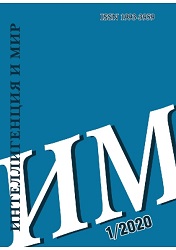Политические ритуалы в жизни комсомольцев начала 1920-х гг.
On political rituals in the activities of the Komsomol members at the beginning of the 1920s
Author(s): Yuliya Borisovna KostyakovaSubject(s): Political history, Social history, Government/Political systems, Interwar Period (1920 - 1939), History of Communism, Sociology of Politics
Published by: Ивановский государственный университет
Keywords: political ritual; Komsomol; Minusinsk district; amateur activities; bureaucratization; periodicals;
Summary/Abstract: The article analyzes activities of the Komsomol members at the beginning of the 1920s in the ritual context of the social and political life in the Soviet state. The case study of the Russian Young Communist Union in the Minusinsk uyezd of the Yenisei province showed the all-Russian trends of the Union development at the regional level, in view of the specifics of the youth movement in Siberia. The empirical research is focused upon Minusinsk periodicals of the 1917—1923s where various reviews and articles report on the youth groups’ activities, including the activities of the Russian Young Communist Union in the Minusinsk district. The analysis of the newspaper materials allowed summarizing the given background to show it as a combination of political rituals, with Komsomol members being leaders and participants. The author defines a political ritual as a certain order of political actions, a way of symbolic political behavior, a means of the impact on people’s emotions and a tool to develop political traditions and to impose political ideas on the public consciousness. Following the idea that political and religious rituals have common features, the author of the article used the religious rituals types to consider the political activities of the 1920s. This technique made it possible to reveal the essence and the aim of such rituals as dedication, initiation, dethronement wrong shrines, praise and self-exaltation in the Komsomol activities. To conclude, the political rituals made people’s adaptation to the new life easier and contributed to the ideological consolidation of the community and mainstreaming of the political myths. The Komsomol members in such rituals showed their political consciousness and loyalty to the Union to involve new members into the Russian Young Communist Union and into the political life of the country.
Journal: Интеллигенция и мир
- Issue Year: 2020
- Issue No: 1
- Page Range: 46-60
- Page Count: 15
- Language: Russian

